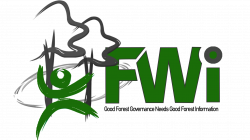
Forest Farmer Groups (KTH) in Mekarjaya and Cipeuteuy Villages, Kabandungan Sub-district, Sukabumi Regency, West Java, are currently engaged in conservation partnership activities supported by Forest Watch Indonesia and Absolute Indonesia, funded by the Environmental Fund Management Agency (BPDLH) through the Sustainable Welfare and Economy program for indigenous communities and local communities (DANA TERRA). Various activities include planting nutmeg and coffee seedlings, acquiring honeybee hives, equipment, and training to support production activities. These steps aim to develop a productive agroforestry business model while improving canopy strata in the rehabilitated areas of Gunung Halimun Salak National Park (TNGHS). However, the financial contribution to KTH from these activities remains unknown. Therefore, this study is focused on projecting the income KTH will receive from various conservation partnership activities.
The Environmental Fund Management Agency (BPDLH) has approved the funding for the Sustainable Welfare and Economy program for indigenous communities and local communities (DANA TERRA) which is promoted by FWI and Absolute Indonesia in 2022. Through the conservation partnership program titled “Balancing Ecosystems for Sustainable Nature and Prosperous People” (SELARAS), this program is expected to contribute to reducing deforestation, increasing land productivity and community economies, and expanding market networks for forest products by strengthening the Forest Farmer Group (KTH) institutions, opening access to empowerment programs for the people by the government, adopting agroecological practices, agroforestry, and digital marketing by Forest Farmer Groups.
The program targets 7 Forest Farmer Groups in Cipeuteuy and Mekarjaya Villages, Kabandungan Sub-district, Sukabumi Regency, West Java, adjacent to Gunung Halimun Salak National Park (TNGHS). Historically, the cultivated areas in these two villages were previously protected forests and production forests owned by Perum Perhutani. Farming activities in this area were conducted through the Community Forest Management Scheme (PHBM) using a mixed cropping system. Residents in these two villages have a close livelihood relationship with land use within TNGHS as they lack personally cultivated land and other reliable livelihoods to meet their daily needs.

On one hand, agricultural land management activities are still partial in terms of production factors, processing, and post-harvest development. On the other hand, limited access to capital and market networks also poses a challenge to KTH business management. This has the consequence that they need to heavily rely on investors who also act as agricultural brokers (middlemen). As a result, income levels from primary agricultural activities are relatively low (an average of IDR 7.2 million per member per year or IDR 600,000 per month). To address this issue, one of the approaches taken in the conservation partnership program is community empowerment through activities such as:
- Capacity building through training and post-harvest agroforestry business development for KTH members.
- Assistance in developing productive economic enterprises such as distributing and planting coffee, nutmeg, honeybee hives, and equipment to support coffee processing activities.
In addition to forming and improving canopy strata for ecological function restoration in rehabilitation zones, it is also hoped that these approaches will also provide economic benefits to KTH members in the TNGS area. However, the projected income from the conservation partnership through coffee and nutmeg cultivation activities for KTH members is still unknown.
Study Objectives
This study aims to determine the projected income that KTH will receive from conservation partnership activities through coffee and nutmeg cultivation in Mekarjaya and Cipeuteuy Villages, Kabandungan Sub-district, Sukabumi Regency, West Java.
Research Method
This field study uses a descriptive qualitative approach to obtain a holistic picture of the cost and income elements of KTH activities, both before (pre-intervention) and after (post-intervention) the program. Income projections are based on the financial benefits that KTH will obtain from the program activities, including:
- Distribution and planting of 1300 coffee trees per KTH, with each member receiving an equal number of trees, proportionally divided into 800 Arabica and 700 Robusta coffee trees.
- Sale of coffee in cherry (red beans) and green beans forms.
- Distribution and planting of 850 nutmeg trees per KTH.
- Processing palm sugar into ant sugar.
- Distribution of Trigona itama honeybee hive units at a rate of 3 hives per KTH.
More details can be read at the link below:




